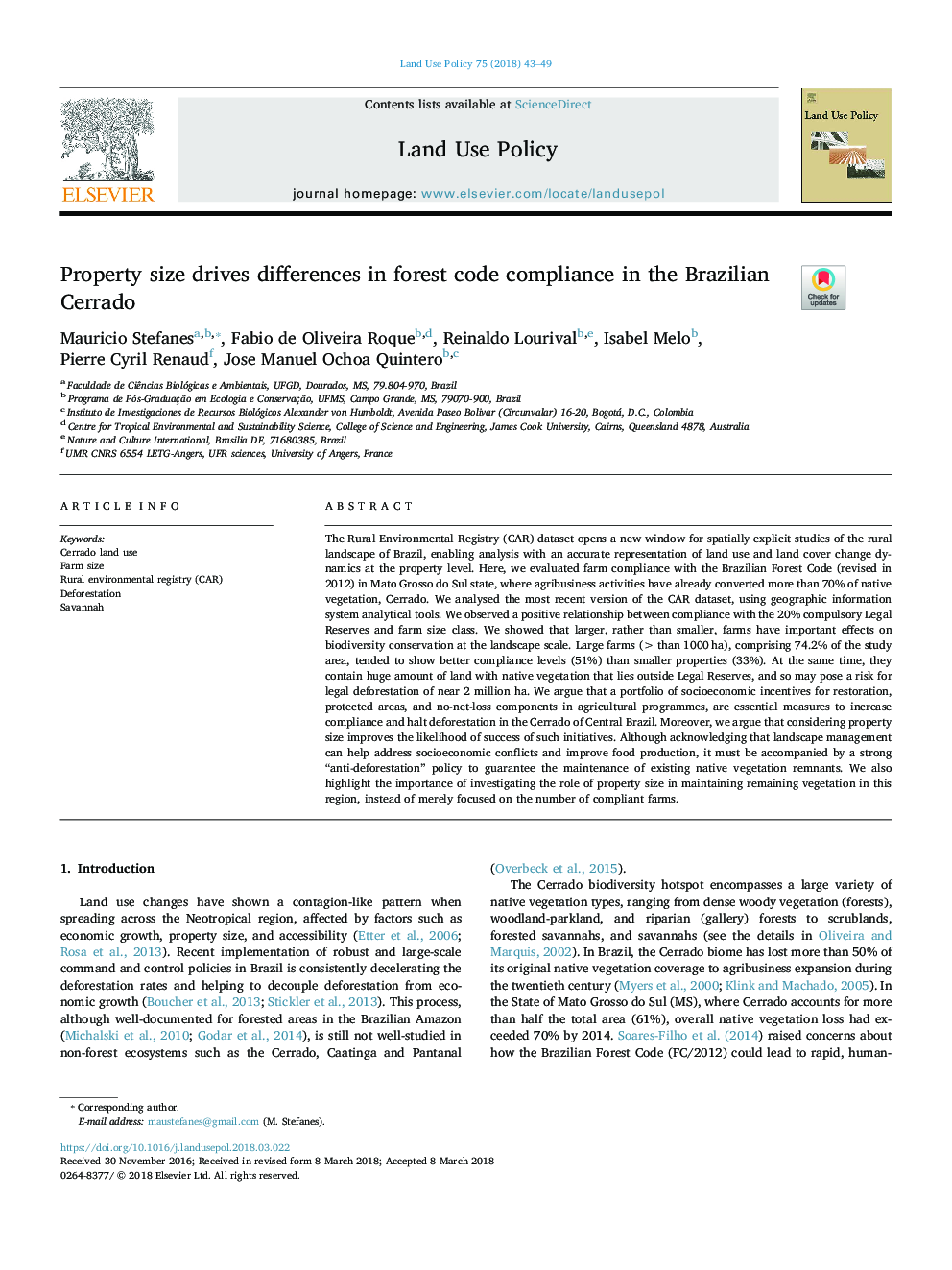| Article ID | Journal | Published Year | Pages | File Type |
|---|---|---|---|---|
| 6546344 | Land Use Policy | 2018 | 7 Pages |
Abstract
The Rural Environmental Registry (CAR) dataset opens a new window for spatially explicit studies of the rural landscape of Brazil, enabling analysis with an accurate representation of land use and land cover change dynamics at the property level. Here, we evaluated farm compliance with the Brazilian Forest Code (revised in 2012) in Mato Grosso do Sul state, where agribusiness activities have already converted more than 70% of native vegetation, Cerrado. We analysed the most recent version of the CAR dataset, using geographic information system analytical tools. We observed a positive relationship between compliance with the 20% compulsory Legal Reserves and farm size class. We showed that larger, rather than smaller, farms have important effects on biodiversity conservation at the landscape scale. Large farms (> than 1000â¯ha), comprising 74.2% of the study area, tended to show better compliance levels (51%) than smaller properties (33%). At the same time, they contain huge amount of land with native vegetation that lies outside Legal Reserves, and so may pose a risk for legal deforestation of near 2 million ha. We argue that a portfolio of socioeconomic incentives for restoration, protected areas, and no-net-loss components in agricultural programmes, are essential measures to increase compliance and halt deforestation in the Cerrado of Central Brazil. Moreover, we argue that considering property size improves the likelihood of success of such initiatives. Although acknowledging that landscape management can help address socioeconomic conflicts and improve food production, it must be accompanied by a strong “anti-deforestation” policy to guarantee the maintenance of existing native vegetation remnants. We also highlight the importance of investigating the role of property size in maintaining remaining vegetation in this region, instead of merely focused on the number of compliant farms.
Keywords
Related Topics
Life Sciences
Agricultural and Biological Sciences
Forestry
Authors
Mauricio Stefanes, Fabio de Oliveira Roque, Reinaldo Lourival, Isabel Melo, Pierre Cyril Renaud, Jose Manuel Ochoa Quintero,
